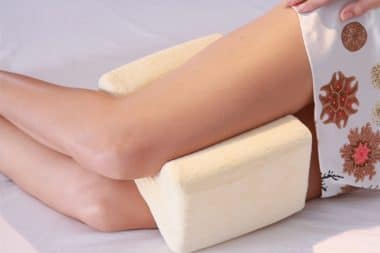The Achilles tendon is one of the largest tendons that anchor muscle to bone and certainly one of the most vulnerable. The Achilles tendon attaches proximally (closest to the head) to the end of the calf muscles and distally (furthest from the head) to the calcaneous or tip of the heel bone. Movement of the foot from pointing to flexion requires the use of the calf muscles and therefore the use of the Achilles tendon.
The tendon was named after a mighty Greek warrior and one of the hero’s in Homer’s Iliad. In an attempt to make her boy immortal she held him by his heel and dipped him in the river Styx. Everything the water touched was invulnerable but what remained dry was not.
Identification and Diagnosis
The Achilles tendon bears the brunt of the force of pushing off against the ground in running and jumping, or pushing against the pedals in biking. But you do rely on this tendon every time you move your foot. The tendon is most often ruptured or torn during an explosive action requiring eccentric force — such as when jumping or starting to sprint.
First there is a pop or a snap and then comes a sharp pain in the lower leg and heel that makes it impossible to walk. In fact it is impossible to walk if the rupture is complete because the calf muscle is no longer attached to the heel and can’t move the foot.
During examination the doctor will elicit a history that involves a blunt trauma to the tendon resulting in the rupture or significant ankle contraction such as when starting to sprint or jump. There will be weakness, pain, calf swelling, and an inability to appropriately move the foot into dorsiflexion (toes flexed toward the head). The patient will report an inability to walk up and down stairs.
There also may have been a prior diagnosis of a sprained ankle because they continue to have active plantar flexion or the ability to point their toes. Presenting late for treatment and rehabilitation affects the long-term outcome of the recovery negatively.
People who have had a prior Achilles tendon rupture that was treated conservatively without surgery have a high rate of recurrence. Weekend warriors or those older athletes who only workout on the weekends also has a higher rate of injury due to decreased flexibility and increased weakness of the calf muscle.
During physical examination the doctor will feel the entire calf area to find swelling, tendon defects and tenderness. When there is a complete rupture there will be a gap in the tendon that is palpable approximately 1-2 inches above the site of insertion at the heel. Physicians will note that there is an inability to stand on the toes.
Several physical tests may be performed to confirm the diagnosis of an Achilles tendon rupture. The hyperdorsiflexion sign is done while the patient is lying on their stomach with both knees flexed to 90 degrees. The doctor manually flexes the feet and compares the results side by side.
In the Thompson test the patient is again on their stomach and the affected leg is extended. The doctor will squeeze the calf muscle to indirectly point the toe. A positive test results if the foot doesn’t point and helps to confirm the diagnosis of a rupture.
There are several common risk factors of an Achilles tendon rupture that include:
- Weekend warrior or recreational athlete who doesn’t know their limitations
- Older athlete between 30 and 50 years
- Prior Achilles tendon injury, tendonitis or rupture
- Prior injections to the tendon or use of fluoroquinolone
- Abrupt change in training or activity level
- Starting a new activity
- Weakened calf muscles
- Poor flexibility in the Achilles tendon or calf muscles
Although an x-ray won’t reveal a ruptured Achilles tendon the physician may be looking for an injury to the calcaneal bone where the Achilles tendon attaches. During some injuries the Achilles tendon doesn’t rupture but rather pulls part of the calcaneous off of the heel. The end result of lack of use of the ankle is the same but the treatment is entirely different.
A ruptured Achilles tendon is painful, requires vigilant care and treatment as well as rehabilitation to recover completely. At times this has ended the running careers of professional athletes or completely sidelined recreational athletes. It is important to note however that with surgical repair, proper treatment and rehabilitation athletes are often able to return to activities they enjoy. The road to recovery however is often difficult but well worth the effort.
Treatment and Recovery
A ruptured Achilles tendon is often the result of a high eccentric force placed against the foot while in dorsiflexion. In other words — taking off running quickly, or jumping. The factors that impact this type of injury are often the strength and flexibility of the calf muscles which are usually weaker and decreased in older recreational athletes.
Treatment of a ruptured Achilles tendon can be conservative or surgical in nature. A conservative approach places the patient in a cast for 8 weeks with the foot in plantar flexion, or toes pointed, to help the tendon reconnect. This type of treatment may work for those who aren’t interested in becoming very active again once the treatment has been completed. Unfortunately the conservative approach has a high incidence of repeat injuries following recovery.
Some of the reasons that physicians and patients may choose a more conservative approach is because the patient is a poor candidate for anesthesia due to cardiac or pulmonary problems, poor circulation, and advanced diabetes leading to poor circulation and poor healing, presence of skin problems at the site of the injury, increased age or sedentary lifestyle.
The use of a conservative approach to treatment and casting only also usually increases the time needed for healing. Although the standard time for casting is 8 weeks the healing time is variable and for some people complete recovery comes after 6 months.
The second, and more likely approach, is a surgical repair to the tendon. During surgery the doctor will sew the tendon together to allow greater healing or reattach the tendon to the heel if it were avulsed instead of torn. After surgery patients are also placed in a cast to rest the foot and allow the tendon to heal.
To keep the heel from stretching the cast is initially placed with the toes slightly pointed and gradually moved to the toes being in neutral position. Casting after surgery can also be between 6 and 12 weeks depending upon the type of repair needed.
After either a conservative approach or surgical intervention there will be a period of rehabilitation involving physical therapy exercises to strengthen the leg muscles. Most people will return to normal activities within 4 to 6 months. The amount of recovery is dependent upon the quality of physical therapy and the commitment to the program on a daily basis.
The key to a ruptured Achilles tendon however, is prevention. Before starting any physical activity gently stretch the tendon and calf muscles and warm them. Stretch slowly and not to the point of pain. You should feel a gentle pull but not pain. Never bounce during a stretch since you’re increasing the risk of rupturing, tearing or avulsing the tendon.
Avoid excessive stress on the Achilles tendon such as hill running or jumping. If you notice pain while doing physical activities stop and rest. Alternate high impact sports such as running with lower impact sports such as walking, biking or swimming. Do strengthening exercises for the calf muscle and stretch the muscles and tendons regularly.
A ruptured Achilles tendon will sideline you from your physical activities for up to 6 months but the rehabilitation and recovery is well worth the process. Physical activity improves your emotional and mental states, decreases your risk of stroke, heart attack and immune mediated illnesses such as arthritis and lupus as well as improving your circulation. To continue to reap the benefits and rewards of a strong exercise program continue to work through the rehabilitation to return to your normal activities.





